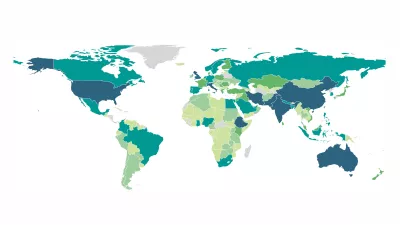Health financing
Our health financing work examines health spending from governments, individuals, and other channels to inform policymakers about where resources for health are coming from and where they are going.
What is the Financing Global Health report?
Our Financing Global Health (FGH) report is an annual project that tracks global health spending. Each issue in the series reports on global health spending from 1990 onward, with a focus on notable global events that form the context of our annual capstone paper.
We present estimates split into two parts: current and future health spending.
The first is focused on funding today’s priorities and includes estimates of total health spending for 204 countries, as well as detailed estimates of development assistance for health (DAH).
The second part is concerned with the future and includes estimates of both domestic spending and DAH, to 2050.
What methods do we use to estimate health financing?
We estimate four sources of health spending:
- Development assistance for health (DAH)
- Government spending
- Out-of-pocket spending
- Prepaid private spending
Additionally, we disaggregate donor funding for pandemic preparedness and response. Input data are drawn from global databases from the World Health Organization (WHO), Organisation for Economic Co-operation and Development (OECD), the World Bank, and International Monetary Fund (IMF); agency and government-specific reports; outreach to key organizations leading to custom datasets; and tax records. We use a broad set of methods to standardize these data sources and to fill in gaps where data are missing. We combine health spending estimates with estimates of resources needed for pandemic prevention and preparedness to analyze future health spending patterns relative to need.
Find more details on methodology for the Financing Global Health report in the Methods Annex.
Collaborate on future research
At IHME, we believe science is a team sport. If you are interested in contributing to our health financing work, please get in touch!

What do these terms mean?
Annualized rate of change
This is the growth rate needed each year (i.e., annualized) to go from the observed amount in one year to an observed amount in a different year. Also known as compound growth rate (with annual compounding).
Development assistance for health (DAH)
Financial and in-kind resources that are transferred through international development agencies (such as United Nations Children’s Fund [UNICEF], the United Kingdom’s Department for International Development, or the Bill & Melinda Gates Foundation) to low- and middle-income countries with the primary purpose of maintaining or improving health.
Disability-adjusted life year (DALY)
One DALY is equivalent to one lost year of “healthy” life. The sum of these DALYs across the population, or the health loss, is a measurement of the gap between current health status and an ideal health situation where the entire population lives to an advanced age, free of disease and disability.
Global Burden of Disease super-regions
Seven regions which group sub-regions based on cause of death patterns. Super-regions are as follows: GBD high-income; Latin America and the Caribbean; sub-Saharan Africa; Southeast Asia, East Asia, and Oceania; Central Europe, Eastern Europe, and Central Asia; South Asia; and North Africa and the Middle East.
Government health spending
Spending for health care that is derived from domestic sources and is mutually exclusive from out-of-pocket, prepaid private, and DAH spending. Government spending includes spending on public health system infrastructure and government-provided social health insurance.
Health financing transition
The shift that countries experience from an early period in which health spending is low and primarily out-of-pocket to a later period in which health spending is high and primarily pooled.
Out-of-pocket health spending
Payments made by individuals for health maintenance, restoration, or enhancement at or after the time of health care delivery, including health insurance copayments or payments devoted to deductibles. Health insurance premiums are not considered out-of-pocket.
Prepaid private health spending
Health spending sources from non-public programs that are funded prior to obtaining health care, such as private health insurance and services provided for free by non-governmental agencies.
Total health spending
The sum of government health spending, prepaid private health spending, out-of-pocket health spending, and DAH. Total health spending does not include indirect health spending, such as lost wages due to illness or transportation costs; informal care (spending on care provided by a family member or by traditional healers); or illegal transactions.
Universal health coverage
The goal of universal health coverage is to ensure that all people have access to effective health services and may partake of these services without financial hardship.
World Bank income group
The World Bank classifies countries using gross national income (GNI) per person. The Financing Global Health report uses the Fiscal Year 2024 World Bank income groups, which are high-income (GNI per person greater than $13,846), upper-middle-income ($4,466 to $13,845), lower-middle-income $1,136 to $4,465), and low-income ($1,135 or less).
